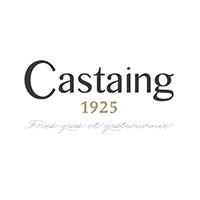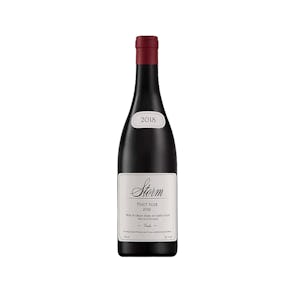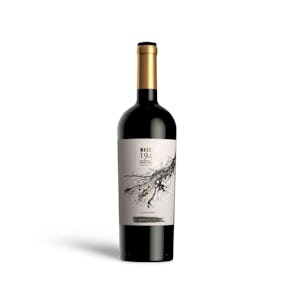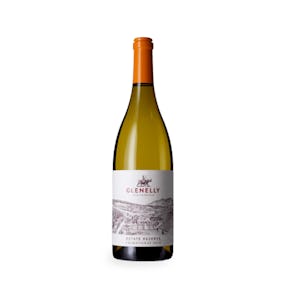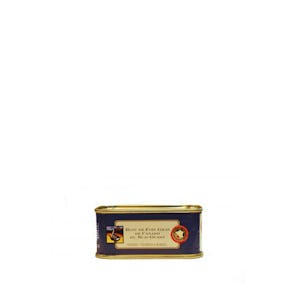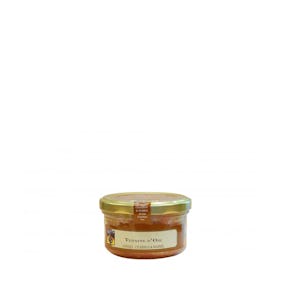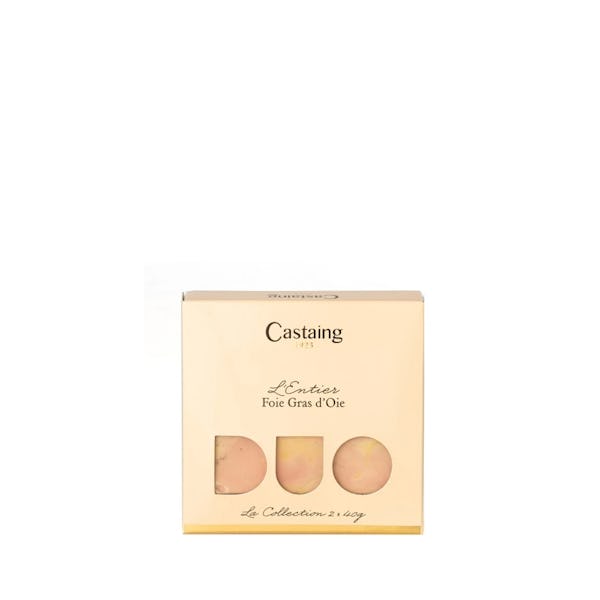
TASTING NOTES FROM THE CURATOR
The Castaing company has been producing foie gras and other duck and goose products in Saint-Sever, Nouvelle-Aquitaine since 1925. Their whole goose foie gras is portioned perfectly for lunch or a light evening meal for two, with a more subtle buttery meat flavor than that from a duck. It expresses itself more in an extended aftertaste than a shocking first bite, overwhelming the senses—taste and smell both—in a multisensory culinary micro-journey like no other.
PAIRINGS
The texture of foie gras is best enjoyed when handled as little as possible. Cut thinly into your block with a warm knife and place the portion onto a small slice of bread—with a sprinkling of pepper, if you wish, to flesh out the flavor. A swipe of French mustard or balsamic spread will only heighten the savory taste further. If you prefer to soften it, a dollop of jam or fruit preserve, or a side of crisp sliced fruit like apples or pears steeped in wine provide wonderful complementary flavors. The classic wine pairing for this delicacy is a sweet French Sauterne, but if you have your foie gras with fruity accompaniments, a Pinot Gris or Pinot Grigio will also serve you quite excellently. For a change, try a pear or apple cider for a touch of acid to cut through the heady mineral flavors of the liver, and you’ll be surprised at how well it pairs!
A HISTORIC DELICACY
Long before the French took foie gras to the very pinnacle of haute cuisine, the ancient Egyptians developed the technique of gavage to produce fattier fowls. The practice spread through the Mediterranean and was adopted by the Greeks and Romans, who made it a delicacy, fattening ducks and geese explicitly for their livers. Hundreds of years later, during the Renaissance, Jewish influences spread what we now know as foie gras to the court of Louis XIV. From there, the foie gras went on to be deeply ingrained in the highest circles of French dining.
Storage Instructions
Store in fridge.

